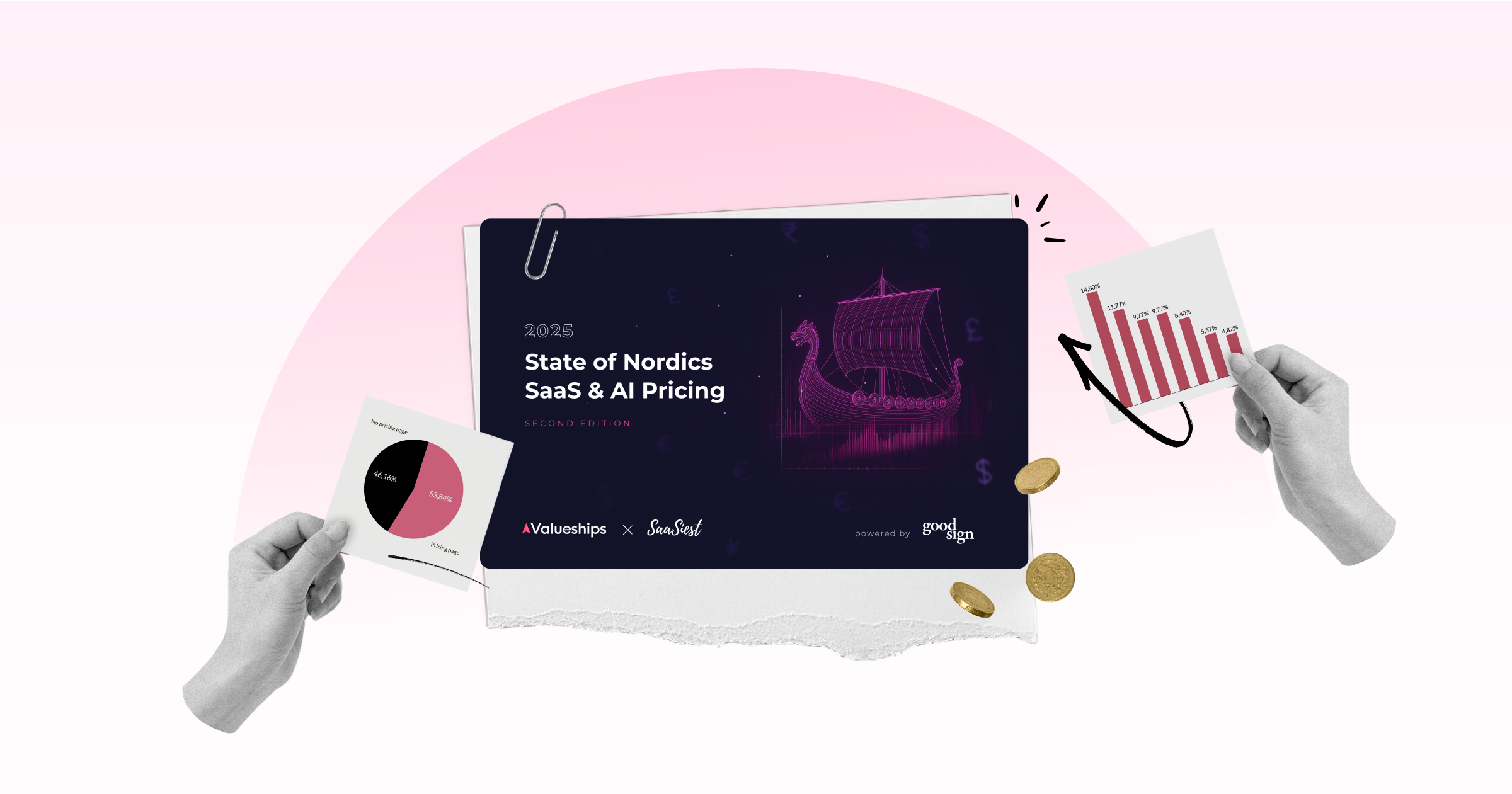
Curious how Nordic SaaS companies are shaping pricing strategies in a region known for innovation and efficiency?
Think of it as unlocking the secrets of a sophisticated market and the ‘State of Nordics SaaS & AI Pricing’ report reveals the key patterns and trends.
In collaboration with SaaSiest and Good Sign, we analyzed nearly 1,500 Nordic SaaS businesses across Sweden, Norway, Finland, Denmark and Iceland. We studied their pricing pages, plans and AI integration, and placed a strong emphasis on analyzing customer data to uncover pricing trends and strategies that distinguish top performers.
Ready to learn the strategies driving growth, transparency shifts and AI monetization in the Nordic SaaS space? Here are the most essential insights you don’t want to miss.
Pricing is one of the most critical levers for any business, directly impacting profitability, market share, and customer perception. For SaaS companies, getting the pricing strategy right is even more essential, as it shapes not only how customers view the product but also how revenue is generated and sustained over time.
At its core, pricing is about finding the optimal balance between what your business needs to thrive and the perceived value your customers place on your service. Effective SaaS pricing strategies start with a deep understanding of customer demand-what features and benefits are most valued, and how much are customers willing to pay for them? This perceived value should guide your pricing decisions, ensuring that your offering stands out in a competitive landscape. Understanding how SaaS pricing work involves selecting, implementing, and continuously adjusting pricing models based on costs, value, and market research.
Competitive pricing is another key factor. SaaS companies must keep a close eye on how similar services are priced, adjusting their own price points to remain attractive while still supporting healthy profit margins. A competitor based pricing strategy involves setting your prices by closely examining and aligning with competitors' pricing, which is especially relevant for new market entrants and small businesses in competitive environments. However, simply matching competitors’ pricing isn’t enough; the most successful SaaS pricing models are those that clearly communicate unique value and justify their price through differentiated features or superior service.
Revenue management is also central to SaaS pricing strategies. By leveraging data on customer segments, usage patterns, and market trends, companies can refine their pricing models to maximize sales revenue and support long-term growth. This might mean adopting dynamic pricing, experimenting with tiered pricing plans, or introducing new value-based pricing approaches that better align with how customers use and benefit from the service. It's important to analyze different pricing models, including cost plus pricing cost, to determine the right pricing model for your business.
Ultimately, the right pricing strategy is one that evolves with your business and your market. By understanding the fundamentals-perceived value, customer demand, competitive pricing, and revenue management-SaaS companies can set prices that not only attract and retain customers but also drive sustainable business growth.
This report is the outcome of our joint effort to analyze how SaaS companies across the Nordics approach:
Whether you're benchmarking your own strategy or simply keeping a pulse on the market, this data-driven report highlights what’s working and what’s changing in SaaS pricing today.
-The Nordic SaaS market is characterized by steady growth and a strong focus on innovation, particularly in AI adoption.
-The top 5 SaaS categories account for over 50% of the Nordic market, including Vertical Industry Software, Marketing, ERP, HR and Business Services.
-More than half of Nordic SaaS companies feature transparent pricing pages, but there is a notable shift toward customized, transparent pricing models driven by advanced solutions.
-The average number of pricing plans is around 3, aligning closely with best practice recommendations. These plans are often offered at different price points to cater to a range of customer needs.
-Pricing in the Nordics predominantly uses the Euro, with USD and other currencies also present, reflecting international ambitions.
-AI is incorporated by about one-third of Nordic SaaS companies, mainly as an enhancing feature rather than a standalone tool.
-Offering tailored plans, usage-based pricing, clear add-ons, and additional features correlates with higher willingness to pay and better market positioning.

What’s changed in Nordic SaaS? A year-on-year comparison
Download our full 'State of Nordic SaaS & AI Pricing' report for a comprehensive analysis of key pricing strategies, AI monetization trends, and regional pricing insights shaping the future of SaaS in the Nordics.
Get your copy today and start optimizing your pricing strategy for growth!
Only 57% of Nordic SaaS companies have a visible pricing page, missing out on key customer engagement and opportunities for revenue growth by attracting more customers.
No pricing page = missing out on potential revenue. Effective pricing models can help sell SaaS products more efficiently. Many SaaS companies adopt these models to address fluctuating usage and improve customer satisfaction.

And why is that? Here is the answer from the expert point of view:
SaaS pricing isn’t about how sellers want to get paid, it’s about how users want to pay you. Different pricing models, such as subscription, usage-based, tiered, freemium, or per-user plans, directly influence how customers pay for SaaS products. A user based pricing model determines costs by the number of users, either active or passive, and can include tiered options for different customer segments. Active user pricing and per active user pricing are flexible alternatives to the traditional per user model, charging only for users who actively engage with the software during a set period, which helps organizations avoid paying for inactive users. All the next-gen winners turn pricing into part of the customer experience. Strong selling skills are essential to communicate the value of these pricing strategies to customers and drive adoption. We are playing a new game where new rules are simple:
1: SaaS pricing isn’t about how your customers want to pay
2: Pricing is now part of the user experience.
3: Users are the new buyers
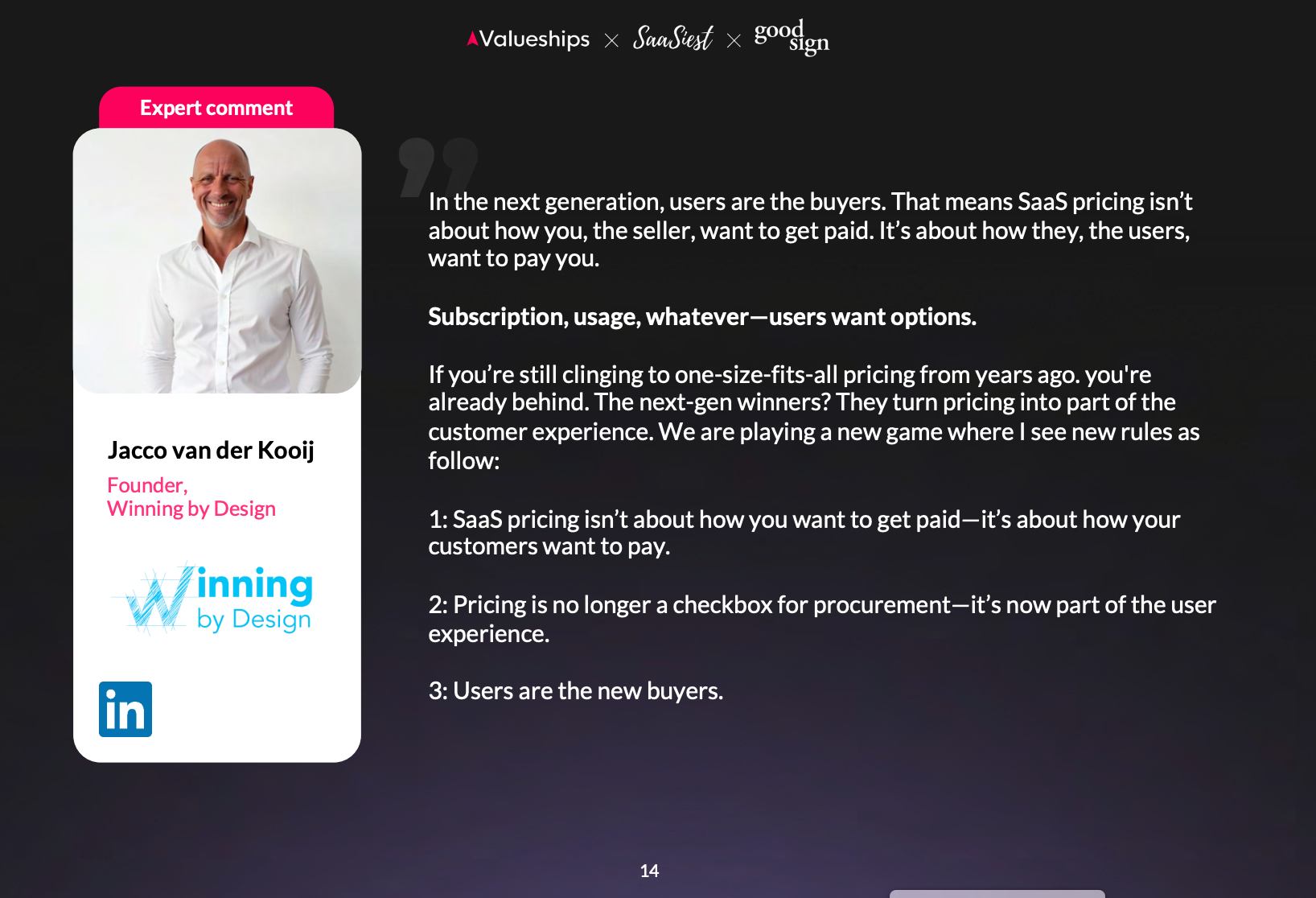
Pricing transparency dropped 10 percentage points as more companies adopt tailored “talk to sales” models.
The 10 percentage point drop in transparency doesn’t mean companies no longer want to share their prices. The main reason is that their tools are more advanced and need customizations. Companies often need to adjust pricing to meet individual customer requirements and maximize value. - Aleksandra Romańczyk Head of Marketing Valueships
What are the reasons for this shift?
-The drop in transparency is linked to the growing trend of SaaS companies adopting more customized solutions. In this scenario, companies prefer engaging prospects personally to discuss pricing tailored to specific needs, rather than publishing static pricing models, especially when considering customer price sensitivity.
-While companies still value sharing pricing, the complexity of products has increased, requiring more flexible and individualized pricing discussions. Understanding the target market is crucial to ensure pricing strategies align with the preferences and expectations of the intended customer group.
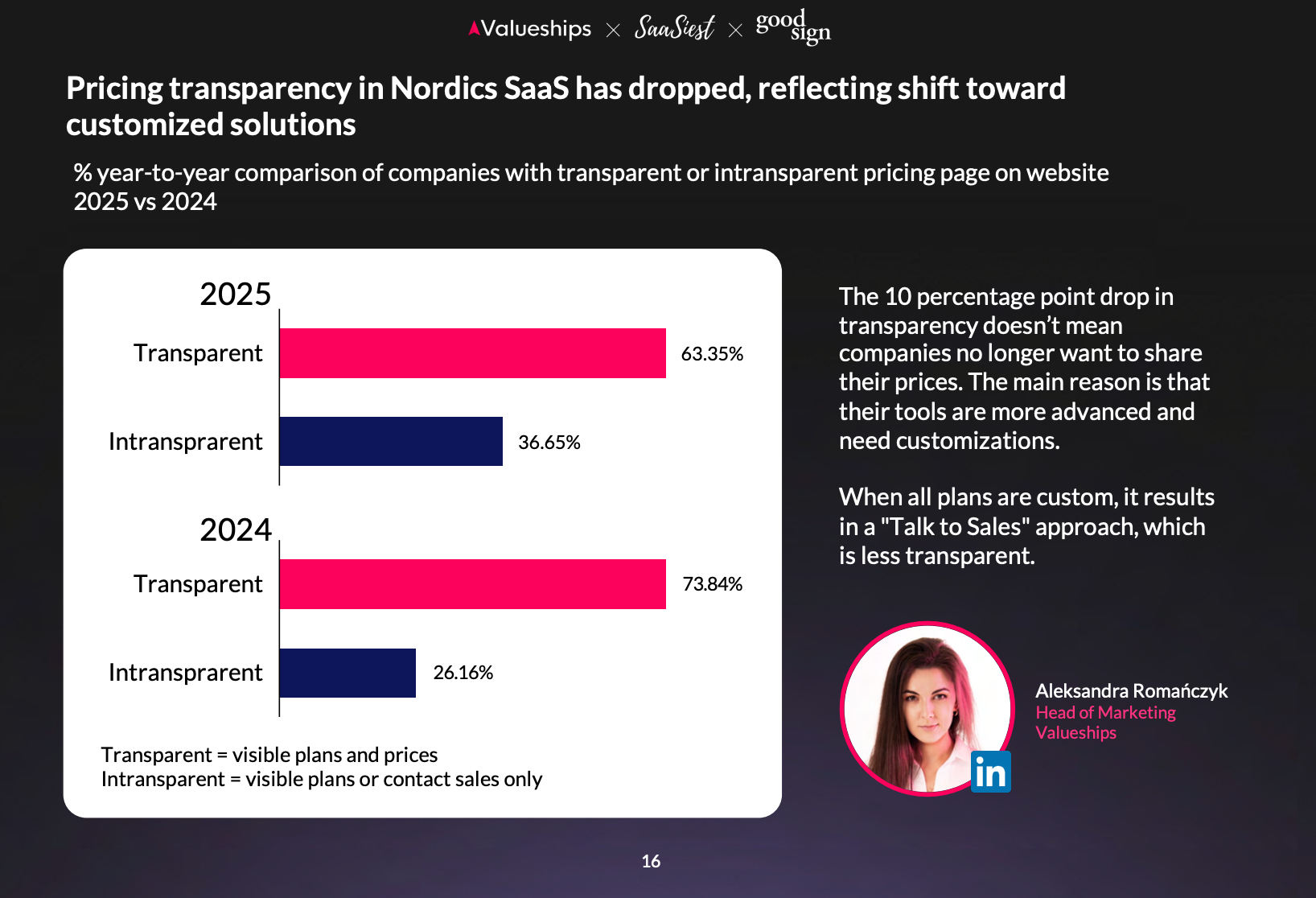
We’ve gone from no pricing page to a structured breakdown of packages and features. The next step is to decide whether to publish prices. It’s a balance between transparency and the realities of market norms and competitive signals. None of our competitors share pricing yet.- Frida Ahrenby Chief Marketing Officer at Rillion

Premium plan prices jumped 68% year-over-year, as companies set a higher price to reflect advanced features and value. Some companies use a high initial price for premium plans to target early adopters, then later offer a discounted price to attract more price-sensitive customers.

Understanding what represents value for customers with varying willingness to pay allows for better diversification of your offering, higher conversion rates, and encourages customers to upgrade to a higher tier for more value. Premium pricing strategies can also improve profit margin and maximize revenue potential. Using a price based approach helps align your pricing with the perceived value for different customer segments - Maciej Orczykowski (Head of Data Analytics Valueships)
Price is what you pay. Value is what you get. If your pricing isn’t tightly aligned with the real value your customers derive, you’re either eroding margins or undermining growth potential. Over the past few years, SaaS pricing has surged. Inflation, richer product capabilities, more focus on value capture have all played a role. Meanwhile, “efficiency” became the operating principle-do more with less.. As the SaaS market matures, commoditization is setting in-putting downwards pressure on pricing. The old playbook of cloud hosted tools with features is being challenged.The era of conventional SaaS is giving way to something new- AI-native platforms, seamless cloud infrastructure and integrated ecosystems built for scale. SaaS isn’t dead. It’s just getting interesting. - Anders Hilmansson (CFO at Refined)
69% of Nordic SaaS firms use AI mainly as a feature value add, not the core tool.
AI plays a role as a supplementary feature. It is also a part of a broader trend in SaaS pricing, where companies are evolving their models to integrate AI capabilities alongside their core product offerings. These features enhance the company’s value proposition by providing additional functionality and flexibility to meet diverse customer needs. Many SaaS providers are adopting a feature based pricing model, which allows them to charge customers based on the specific AI features or modules they select, rather than a flat fee or per-user pricing. These companies are not only leveraging AI for operational efficiency, but also to drive deeper engagement by enhancing customer experiences and solving more complex problems that require advanced technology, which helps support growth for SaaS businesses. For example, AI is frequently used for predictive analytics, customer behavior insights and real-time decision-making within SaaS tools.
AI as a feature leads the SaaS landscape with 69.45%, surpassing AI as a tool, which makes up only 30.55%. This trend indicates a clear preference: AI is seen more as a way to enhance user experiences with tools playing a supporting role to drive functionality - Jakub Jukowski Senior Pricing Consultant Valueships
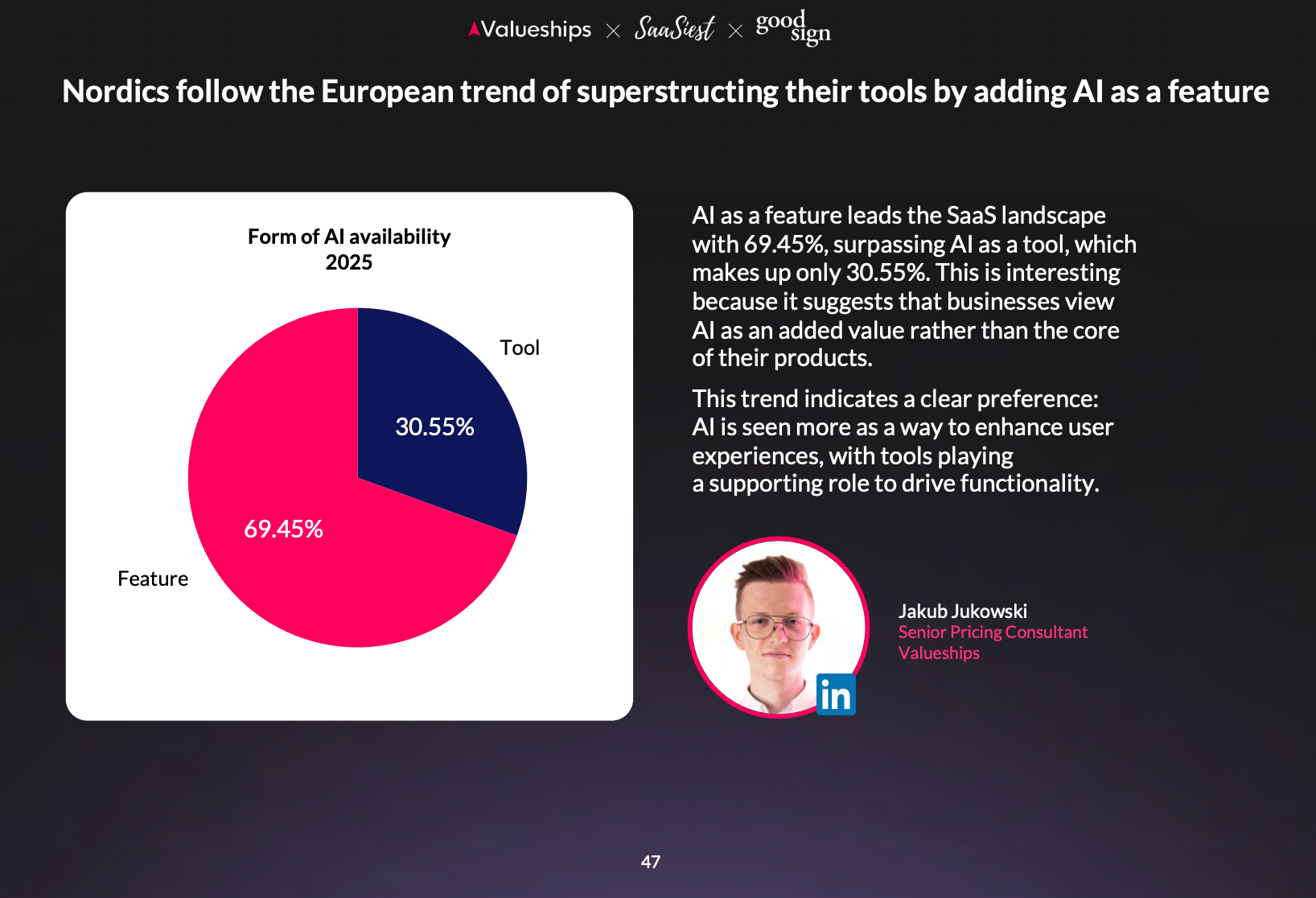
Although 71% of AI pricing is based on the subscription model, outcome-driven pricing is growing steadily.
There are two main areas in terms of AI pricing that you need to be aware of that are currently changing the Scandinavian SaaS landscape. First of all, 1/3 of the companies has some AI application, of which 2/3 do it via feature access, not as a full tool functionality. In other words, less than 10% of the SaaS products embraced a full pivot towards AI.
Most of them experiment with increased productivity, and automation, yet without revolution in their product stack. We will see more of it, but I’m not expecting Nordics to run on the forefront, but rather to see a more sustainable approach towards AI implementation. Secondly, 71% of the AI applications are monetized via the traditional subscription model, where customers pay regular fees, making it the dominant approach for predictable revenue. This aligns with the recurring revenue model, which is crucial for SaaS companies seeking steady and forecastable income streams. While the hype is there in some areas, companies are yet to reap the benefits of new monetization models.
For instance, you can now start charging for the output itself instead of pure access to the tool. When designing AI pricing strategies, consider the customer lifetime value to maximize revenue and foster long-term customer retention. Try experimenting with metrics that capture more value.- Maciej Wilczyński, PhD Managing Partner & Founder of Valueships
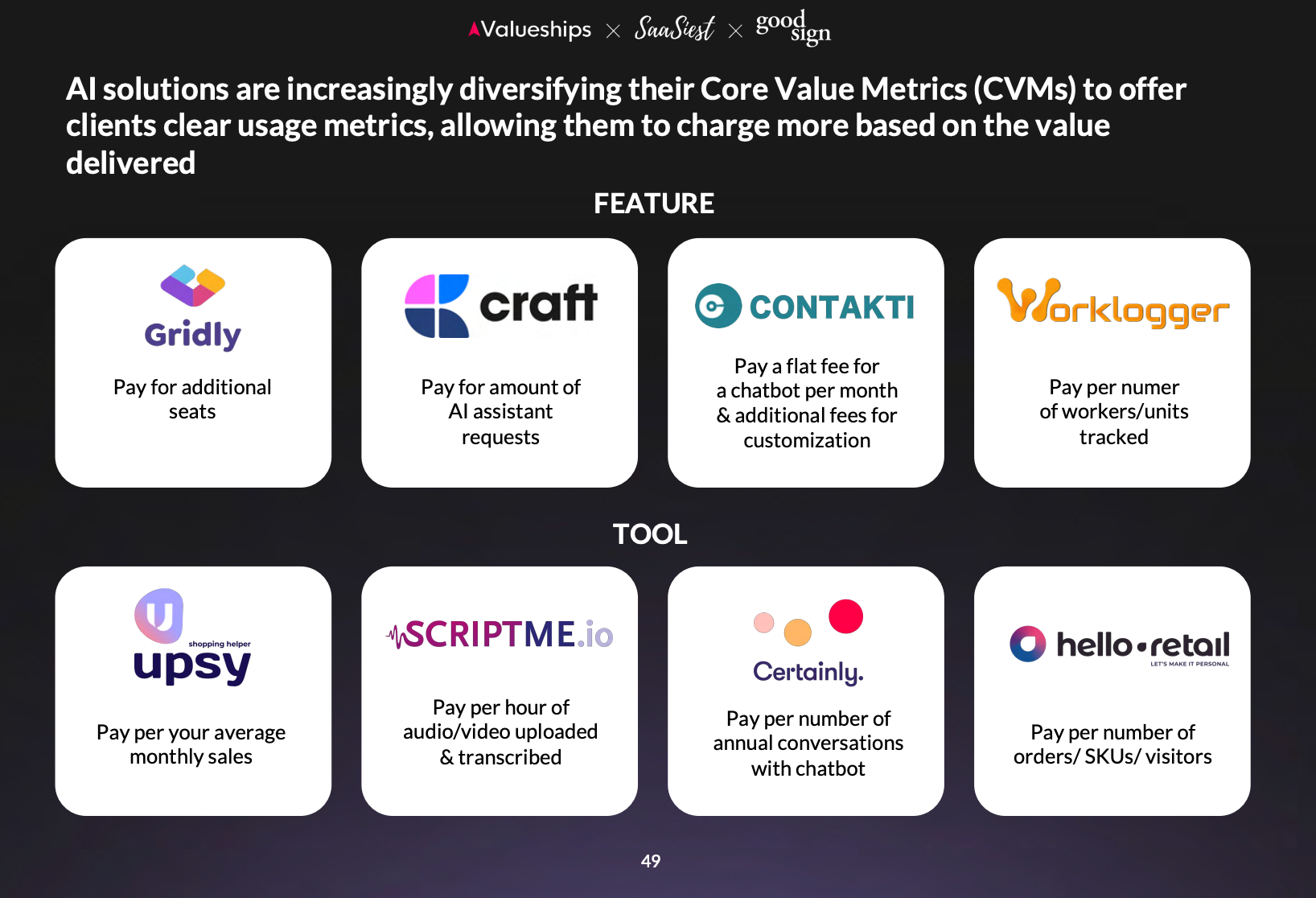
43% of companies price in Euro, while 29% offer local currencies to better match customer expectations.
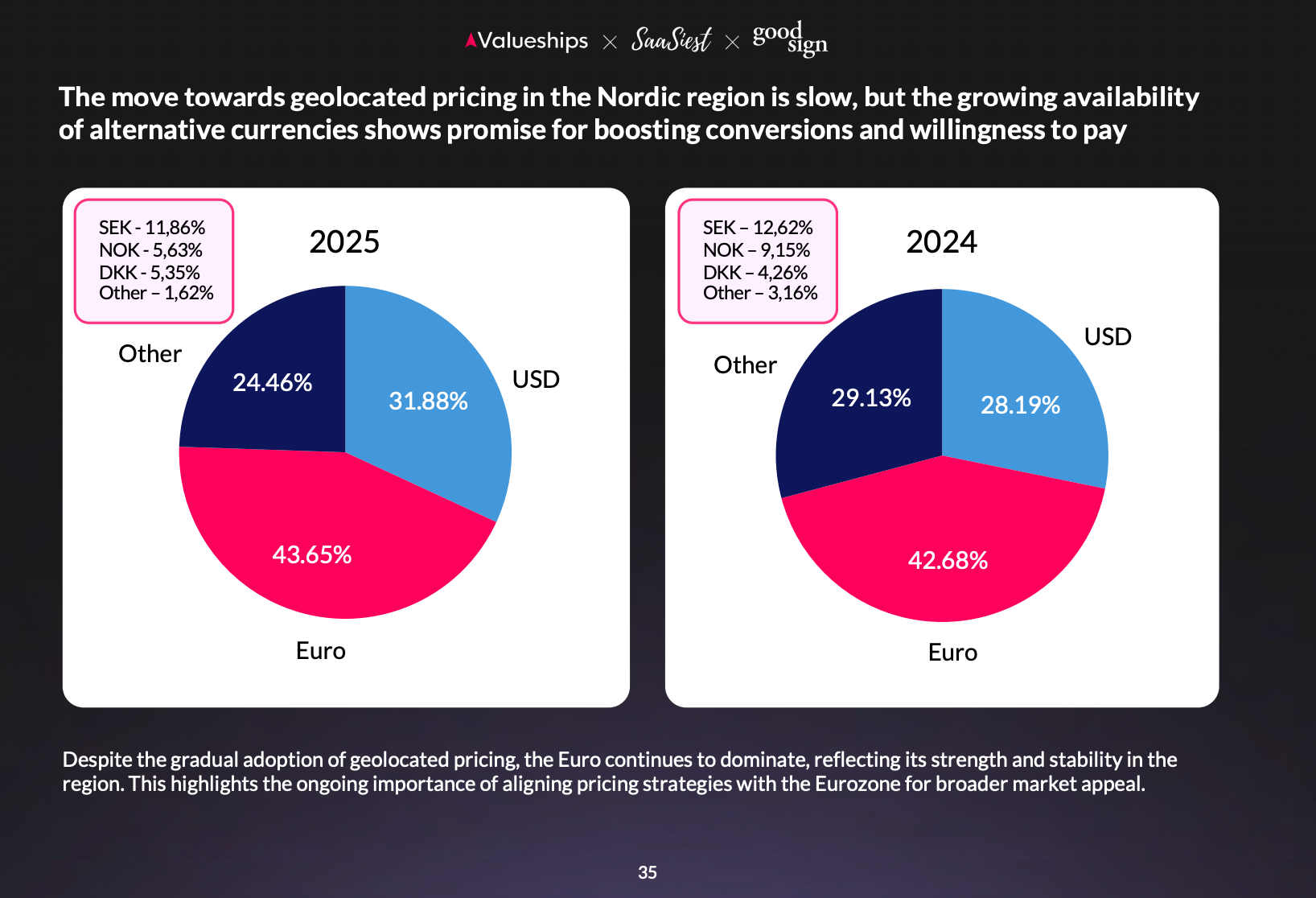
Implementing regional pricing and offering currency flexibility has become increasingly important for Nordic SaaS companies. This aims to expand and tailor products to diverse markets. In 2025, 43% of companies price their products in Euro, while 29% offer local currencies to cater better to regional market demands. Products are often marketed at different price points in various regions to align with local purchasing power and perceived value. This shift towards more localized pricing reflects the growing need for SaaS businesses to align with customer expectations across different geographic regions and enhance their market fit.
By offering currency options and considering regional pricing dynamics, SaaS companies can improve customer satisfaction and provide a more seamless experience for customers in varied economic conditions, as products are sold in local currencies to better match customer expectations. The trend indicates that regional pricing strategies are becoming a key element for Nordic SaaS companies looking to scale successfully across borders and boost sale volumes.
If you’re looking to streamline your pricing model, align it with market demands, and drive sustainable growth, it’s time to take the next step. At Valueships, we specialize in crafting data-driven pricing strategies that maximize revenue and enhance customer engagement.
Let’s work together to refine your pricing approach and help you stay ahead of the competition. Contact us today for a personalized consultation!